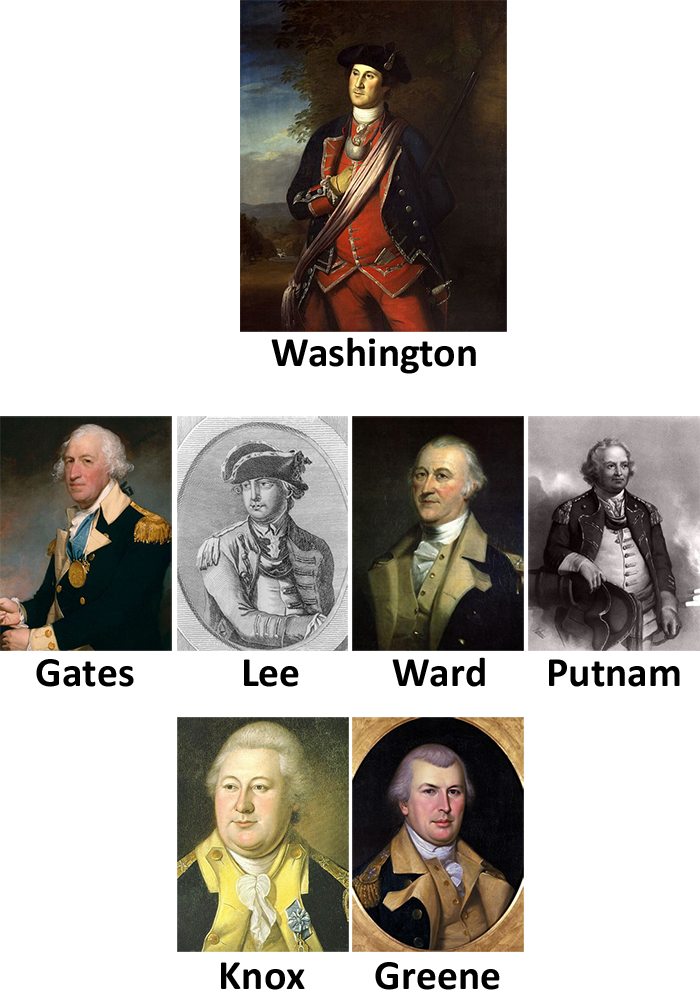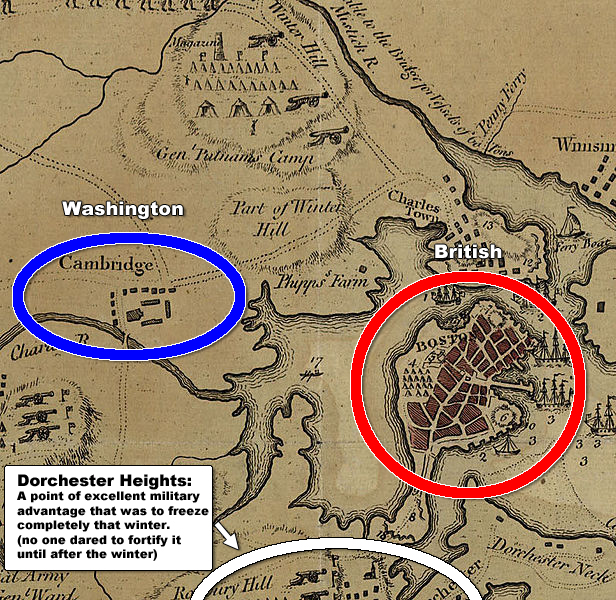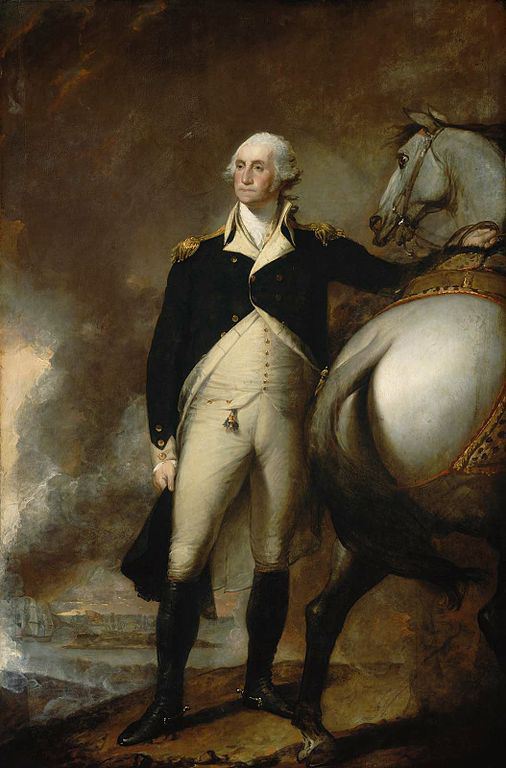Follow me:

Date posted: December 29th 2016
Book Title: Washington - A Life (Part 2)
Book-in-a-sentence
Before there was a nation—before there was any symbol of that nation (a flag, a Constitution, a national seal)—there was Washington.
My Summary (audio)
Where we left off
Ok, the second part starts right after the formation of the Continental Army. The army now had a leader, and they called him “His Excellency”. But one person, as excellent as George was, cannot command an entire army. So naturally, other generals were assigned to control other regiments (or divisions) under George’s command. There were some older and experienced Generals like Horatio Gates, Charles Lee, Artemas Ward and Israel Putnam (or old’ Put, for short). But George was never a fan of these old men, he was more fond of the younger, obedient, and more energetic generals. Among his favorites were Henry Knox and Nathanael Greene.
Below I have portraits of these Generals starting with a portrait of George Washington three years before the Revolution started. The reason I put this one here is so you can see what he looked like right before the Revolution.

Portraits of some of the Generals under George Washington.
At the top, George Washington (age 40) is wearing his old uniform from the French and Indian War.
All images under Public Domain via Wikimedia Commons
Alright, at this point I will stop calling him George and start calling him Washington. This is something I actually did subconsciously as I wrote. Maybe the more I read, the more I gained respect for the guy. After all, they called him “his excellency”.
Dorchester Heights
Alright, let’s begin... After leaving his peaceful home, Washington arrived at the middle of the action in Cambridge, Massachusetts—on Sunday July 2nd, 1775. And by mid‑July his headquarters were set up in Brattle Street.
Now, in the picture below, I can’t use a Google Map because Boston has significantly changed since then. At that time it was a small peninsula and the british had complete control over it. Washington was settled to the west of Boston, in Cambridge—across a narrow strip of ocean.

A map of boston back then. Washington’s headquarters were located in Cambridge and the British were all in Boston.
To the South we have Dorchester Heights, a place that will become important later
Image under Public Domain via Wikimedia Commons
During this first half of July, Washington slowly but surely realized the mess he had gotten himself into. These people were not soldiers in his lines, they were a bunch of drunks! There was not a single drop of discipline or courage in the ranks. Washington had to apply a great deal of effort to influence the soldiers and turn them into a decent army (although one could say, he never got a decent army).
Nonetheless, Washington gained the reputation of something more than a mere mortal, he was viewed with veneration and respect. His presence, much like it was back in Mount Vernon, was a source of inspiration. Still very stoic and never showing his feelings (or his teeth for that matter) he prepared his army for battle in some of the most dreary of conditions.
It was a scary situation, his camp was just a couple hundred feet from the enemy’s camp—they could pretty much wave at each other! And to make the enemy’s proximity even more scary, the Continental Army was going through a serious gun‑powder shortage. If the British had found out about this, that would have been (pretty much) the end of the Revolution. Done! One battle, game over...
Fortunately, the late half of 1775 was almost a stalemate between Cambridge and Boston. Nobody knows what stopped the British from crushing Cambridge, but it was the perfect time of inactivity that Washington needed to sort the situation and get his shit—I mean, army—together. It was not an easy winter (in fact, every winter during the Revolution was an absolute nightmare).
So between struggles with congress for more troops, more gunpowder, and better accommodations, Washington saw the patriotic spirit wither away. The poor soldiers were starving to death in the cold, doubt and fear were everywhere. More troops were supposed to sign up that winter but not even half of what Washington expected signed up. The spirit was feeble and the temperature wasn't helping.
There was one thing that uplifted the spirits of the troops and the colonial citizens that winter. It was a short pamphlet written by Thomas Paine called “Common Sense”. In the text, Paine talked about the ridiculousness of having the British Crown rule such a large piece of land across the Atlantic, and he spoke of the King as an entitled fool. Such provocative words were never spoken before at such a public scale, and this rebellious tone raised the colonial spirit again—saving Washington's army from freezing to death.
The stalemate continued all the way to March of the next year, and although this inactivity saved the Continental Army’s ass, it was very aggravating. Almost every move Washington thought about was rejected by the war council. All but one, and it was masterpiece of sneakiness
There is a hill south of Boston called Dorchester Heights. This place was of great military advantage because it overlooked the entire area, but the reason why it had not been taken yet was because it froze over during the winter. Yet somehow, this group of malnourished and underdressed soldiers fortified the entire hill overnight. The operation was brilliantly done, and the next morning on March 5th 1776, General Howe woke up and saw a full-fledged fortress aiming right at him. Legend has it that he exclaimed “My God, these fellows have done more work in one night than I could make my army do in three months”.
Washington’s brilliant move forced the British out of Boston. And without a single casualty, Washington won his first “encounter”. However, some historians say that this retreat was something the British had already thought of, and that they were preparing for something bigger. New York...
-
That should have been his nickname… “Sneaky George”, because this wouldn't be his only sneaky move.↩

Somewhat of a sad-looking Washington despite his first (casualty‑free) victory.
This was painted in 1803 (many years after the war)—which is why he looks so old—I guess people already remembered him as the old dude that still comes to our minds when we hear Washington. Hopefully after you read this your image will change.
Image under Public Domain via Wikimedia Commons
Click on the next button to keep reading
